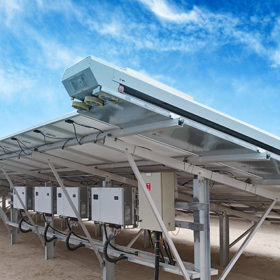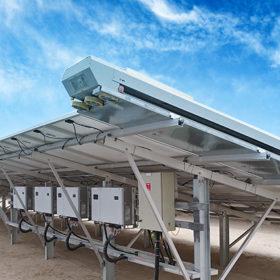Huawei to ramp up artificial intelligence to improve solar inverters

The Chinese conglomerate has revealed how it will further integrate artificial intelligence (AI) in its string devices this year. The approach includes the transformation of inverters into smart PV controllers, the development of AI inference modules and the creation of an AI training and inference platform. Machine learning will also be incorporated into operations and maintenance, grid management and PV plant design.
After developing its first artificial intelligence (AI) -based solar inverter last year, Chinese conglomerate Huawei has revealed how it intends to integrate AI further into its solar business.
This year, according to Huawei, “will witness the comprehensive integration of cloud, AI and 5G technologies.”
An AI roadmap document produced by the company said it would extend AI integration into its string inverters by transforming them into smart PV controllers, developing AI inference modules and creating an AI training and inference platform.
The manufacturer said its string inverters will be improved for high-precision, real-time data collection with real-time control of string-level energy yield optimization, DC arc detection and response to grid-tied control – including real-time inference, execution and self-closed-loop control capabilities.
The AI inference devices mentioned will improve the collection of device data and infer AI models for optimal power generation in real time, according to the inverter maker.
Huawei added, an AI training and inference platform is aimed at further optimizing AI algorithm models without the need to alter existing devices.
Testing
Using string inverters equipped with neural network-based AI training and modeling would allow for increased power generation, the manufacturer claimed, citing tests conducted at PV plants in China’s Anhui province. Energy yield rose an average 1.31% over 183 days, according to the Huawei AI roadmap, which added energy yield improved 0.5-1% in two projects owned by China General Nuclear Power Group Huanghen Hydropower.
The inverter maker said AI algorithms are also being used to prevent fires, especially those caused by DC arcs through poor contact. Huawei said its arc-fault circuit interrupters (AFCIs) solution is already capable of modulating PV system operations when a risk of fire is detected. The technology is also said to be able to learn arc features using AI models, based on a database with more than 1 million arc features.
The Huawei roadmap document includes plans for an improvement of AI capability for operation and maintenance (O&M) services, grid management and PV plant design. For the former, Huawei said fault processing tools integrated with AI technology may replace O&M experts in the near future.
“As repetitive and dangerous tasks are completed by AI systems, these technologies free people from mundane work, thereby reducing manpower input while improving efficiency, speed and accuracy,” the company stated.


